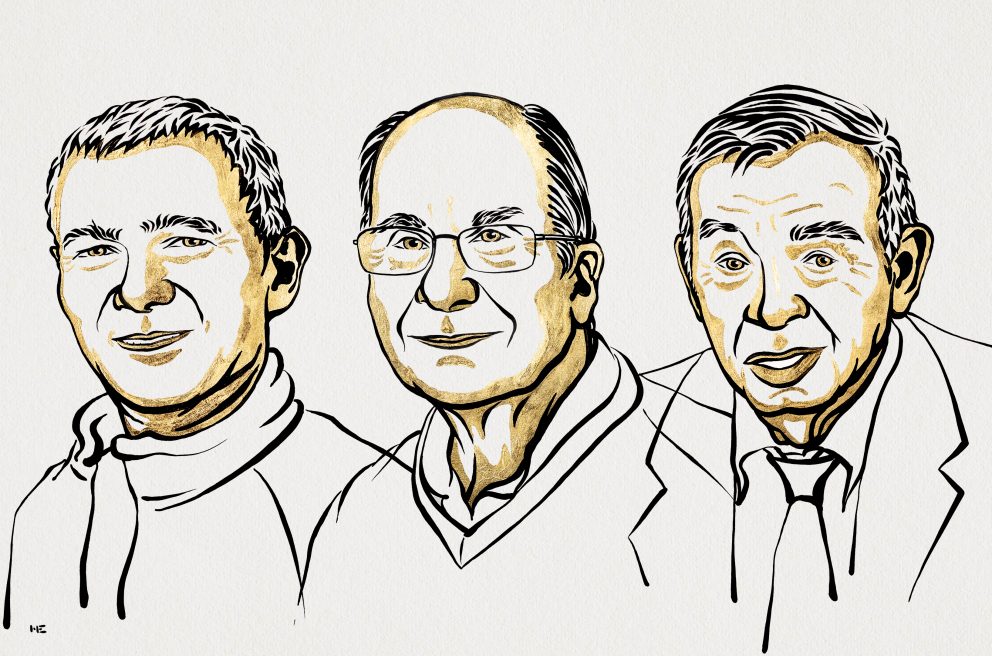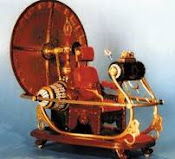Prof. Hiroshi Amano is
well known for his contributions towards fabrication of Blue Light Emitting
Diodes (LEDs). Scientists and Engineers have always been keen to fabricate the
devices which need much less energy for efficient operation. In case of light
emitting sources, bulbs and tube lights are very conventional light sources,
which consume very large electrical power. Light Emitting Diodes (LEDs) were
assumed to be revolutionary devices since 1950s, but it was almost impossible
to be fabricated commercially. A source of white light needs a device that
emits red, green and blue light, these three combine to produce white light.
From historical point of view, the first LED was fabricated in 1950 and the
scientists were successful to fabricate diodes which emit light of wavelength
range from red to green till 1960. To complete the spectrum blue light emitting
device component was needed. Till 1980s, there was no efficient and commercial
solution to the problem. Several scientists were struggling to fabricate
efficient blue LEDs, but failed due to many technical reasons. Prof. Ishamu
Akasaki and his PhD student Hiroshi Amano solved this problem by getting by
growing high quality crystals of GaN with the help of metal organic vapour
phase epitaxy (MOVPE) technique. At the same time Shuji Nakamura also
successfully developed the GaN crystals, while working in America. The
scientists’ trio was awarded Nobel Prize of Physics for their contribution
toward fabrication of light sources which consumes much less electrical power.
LEDs have replaced bulbs and tube-light and are being used all over the world
and become the part of our daily life.
Prof. Hiroshi Amano (Born 11 September, 1960,
Hamamatsu, Japan) is a one of the inventors of “Blue Light Emitting
Diodes”, which have changed the arena of electricity savings in light sources
around the globe. Prof. Amano was awarded Noble Prize in Physics-2014 for his
contributions for fabrication of Blue LEDs with two other scientists Isamu
Akasaki and Shuji Nakamura. He obtained his PhD from Nagoya University in 1989
under the mentorship of Prof. Isamu Akasaki. He started his research in 1982
under his master’s program at research group of Prof. Isamu Akasaki on the growth,
characterization and device applications of group III nitride semiconductors.
The group III nitride semiconductors like Gallium Nitride are well known for
its application in Blue LEDs. He became successful in developing the deposited
buffer layers to grow the group III nitrides based semiconductor thin films on
sapphire substrate which was believed to be almost impossible due vary large
lattice mismatch (16%) between Gallium Nitride and sapphire in early 1985.
These efforts lead towards the successful fabrication of ligh emitting diodes
and laser diodes. Further in 1989, he successfully grew p-type Gallium Nitride
and fabricated a p-n junction diode, which emitted ultraviolet/blue light for
the first time in scientific history. When he started his research work, there
was dearth of high-tech experimental facilities in his university and it was
not easy to do research at that time. He along with his fellow students had to
develop some instrumental facilities including a MOVPE reactor in Nagoya
University during his research period, which helped him to understand the
science and to use the resources in experimentation.
Currently, Hiroshi Amano is full professor at
Graduate School of Engineering, Nagoya University, Japan, where he continues
his research work on energy conversion and storage devices with a well equipped
research lab. He has co-authored around 400 technical research papers till now
which lead him to several prestigious Japanese and international awards
including Nobel Prize for Physics. He writes on his webpage, “Our mission
is to sustainably improve the quality of human life by developing sustainable
devices (i.e., environmentally friendly, long-life devices with high-efficiency
energy conversion) using sustainable materials and low-cost device-processing
technology.” Blue LEDs are being used in Blu-Ray compact discs, HD-DVDs and
display devices. Introduction of LEDs to display devices changed the world of
display devices. Devices from high-tech, thin-sleek smart phones to televisions
have become possible due to LED based display technology. Prof. Hiroshi Amano
is known for his humility and down to earth attitude towards students and
youth. He writes a message to students on his personal webpage, “If you are
still lacking a dream or a purpose of your life, we will be happy to assist you
to find your own dream.”
Recently,
Meher Wan got an opportunity to interview Prof. Hiroshi Amano via email. Here
are the excerpts of the interview-
Meher
Wan (M.W.): Your work was considered for Nobel Prize for Physics in 2014. After receiving
Nobel Prize, How your life has been changed? What type of comfort or
responsibility do you feel after this award?
Prof.
Hiroshi Amano (H. Amano): My life changed a lot. People have started inviting me to a number of
seminars or symposiums as a guest presenter. After the award, I have the chance
of attending different fields of society meetings and discussing with people of
the other fields. I enjoy so much for such discussions with people of other
fields.
M.W.: Let me ask you about your days of childhood. How do
you remember the childhood and boyhood of Hiroshi? How did you perform in your schools? How were you feeling going to school at that time?
H. Amano: At lower school in primary classes,
I was a sickly boy. I got measles, rubella, chickenpox, etc., etc. So, I was
frequently absent from school. But, at higher classes, I started sports such as
baseball or soccer on the advice of my parents. Then, I became healthy. Then, I
became happy to go to school for enjoying sports after class.
M.W.: Many
people usually complain that basic education is becoming boring and
unproductive for students. What was the state of basic education in Japan that
time?
H. Amano: At higher class in primary
school, arithmetic was done by using Japanese abacus. I was an inferior player,
so I was bad at arithmetic. I could not remember other subjects. For me, study
at junior high school was only for preparing entrance examination to high
school. So, it seemed to me very boring.
M.W.: Do
you think that teaching mechanism should
need any reform or modification for
better understanding of subject by students?
H. Amano: Of course, I know that time and
facilities are limited, but if students have time and have chance to use
equipments, they should try (to understand things) by themselves.
M.W.: How
do you perceive the contribution of university professors in your scientific
career? How do you remember your university days?
H. Amano: A lot. I learnt why I should
study at the introduction lecture "Introduction to Engineering", in
the first grade of university. (Prof.
Amano said in many interviews that in his youth, he always wondered thinking,
why all people study? What is the necessity of studies in human life?) Of
course, I decided to proceed in research on blue LED because my supervisor
Prof. Akasaki did this subject.
M.W.:What
was the motivation force to work on GaN material and blue light emitting diodes
(LED)? I mean there are a number of fields to work on.
H. Amano: As I mentioned before, I
recognized why I should study during the lecture of “Introduction to
engineering”. But, I could not find what I should do in my life. When I found
the dissertation subject "Blue LEDs" at third grade of the
undergraduate, I thought I found my dream. I thought I could change the world
by realizing LED displays.
M.W.: What
were the main challenges to work on this field at that time?
H. Amano: I did not know anything (at that
time) about the field of LEDs. So, I started with how to grow GaN crystals (As
GaN crystals were considered as best potential candidates for fabrication of
blue LEDs).
M.W.:
Which was the “eureka point” when you were working on blue LED fabrication? At
that time, have you thought that the small lab level success will change your
life in future?
H. Amano: For me, eureka point was just, when
I found that I could grow high quality GaN crystals by using low temperature
buffer layer. But still, I could not believe that this success would change my
life. After realizing p-type GaN, I changed my mind and I felt that my life may
change.
M.W.:
What problems did you face for this work? Any
interesting story related to this instrumentation. I read somewhere that the
research paper related to this work was rejected initially. Is it true?
H. Amano: It is true. Research paper based
on world’s first p-type GaN was almost rejected. At that time, many people were
interested in ZnSe (semiconducting material) and the GaN- people (people, who
were working on GaN) were in quite minority.
M.W.: Which scientific goal do
you still want to achieve?
H. Amano: It changes and will continue (to change) until my death. As a recent
subject, I can contribute to the food, water, and energy deficiency issues.
M.W.: The energy
invested by you in experiments is saving a huge amount of energy every day.
Device developed by you and your group has been installed around the globe till
now with some upgradation/modification, how do you feel about? Have you
expected the huge success of the device?
H. Amano: Of course, it is great.
When I was a student, I only considered the application (of LEDs) to displays.
Applications to general lighting based on blue LEDs with yellow phosphors
were developed by NIchia Corporation, which accelerated the use of blue
LEDs.
M.W.: You have observed
various developments and changes in semiconductor industry with time for
several decades. How interesting is the story this evolution?
H. Amano: People graduated from
electronics engineering department are changing their focus from vacuum to
solid state devices; it is very common and natural trend. So, it is a n obvious
matter. In case of blue LEDs, I thought someone should do that. If nobody is to
try, I would like to try.
In my view, in recent times, one of the most important
and interesting subjects is how to involve artificial intelligence into
internet system.
M.W.: How do you visualize
the future of semiconductor electronics?
H. Amano: Attempts for connecting the
people-people and people-things by internet should be increasing. So, number of
information technology based semiconductor devices should increase. In addition
to it, critical issues (of 21st century) are energy increase and
information leakage problem.
M.W.: What do you want to
convey to the young minds who want to opt science as their career?
H. Amano: I would like to send the
sentence, Of course, industry size of the opto-science and engineering is
increasing more and more. You may have the chance to get a job. But
"Please, consider by yourself".
I would like to notice that, in
any item, there is durability, good in one side and bad in other side. For
example, LEDs reduce electricity consumption, and increase the number of people
who are seriously dependent on smart phones. When I was a student, I did
believe that change of the display should be the first priority issue. In one
sense, I was successful because blue LEDs are applied to general lighting
systems, and in other sense, I was failed because of the increase in the number
of people who are dependent on smart phones. Today, situation has changed a lot
and I feel only young generation can find the route for a bright future. So, I
would like to send message that "think yourself".
M.W.:
Dear
professor, it is nice to have a conversation with you. Youth will surely be benefitted
with your visionary words.












.jpeg)












No comments:
Post a Comment